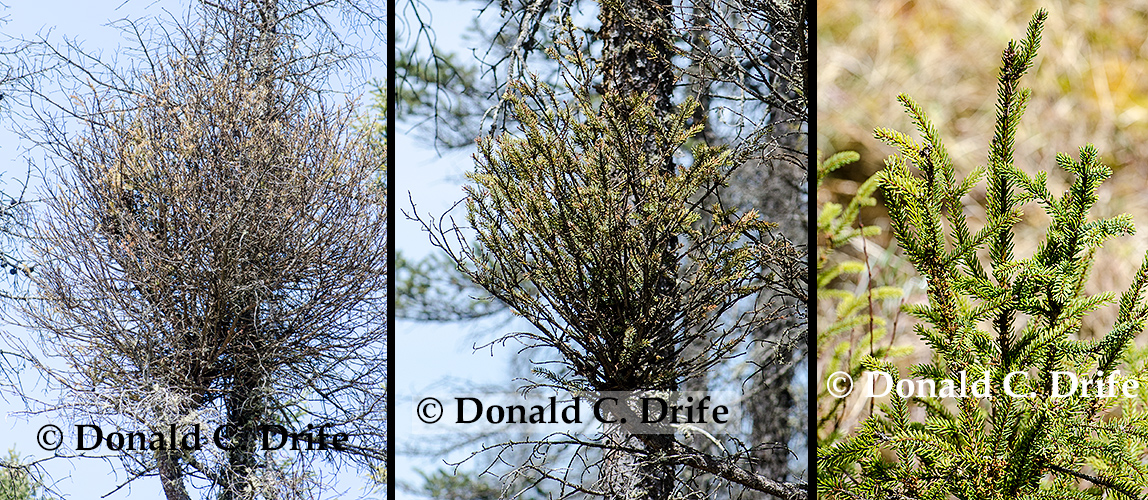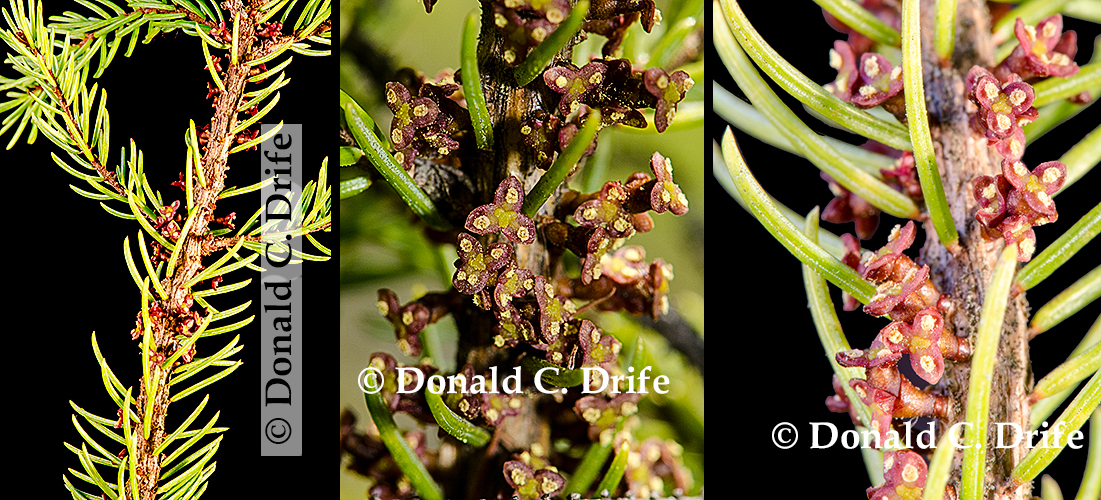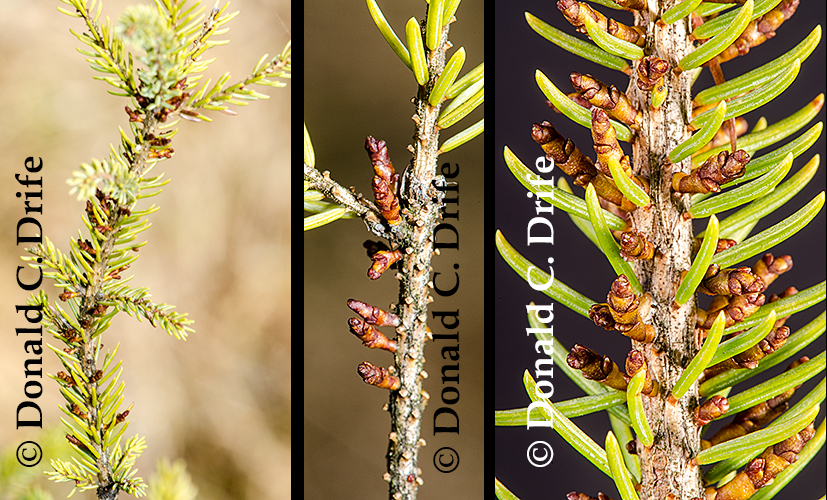Dwarf Mistletoe (Arceuthobium pusillum) is a parasitic flowering plant found on Black Spruce (Picea mariana) and rarely on other evergreens. It is related to southern Christmas Mistletoe (Phoradendron leucarpum). I learned about Dwarf Mistletoe from Billington’s Shrubs of Michigan when I was a boy. He writes, “To include such a little, inconspicuous plant among the shrubs may be stretching things too far. But it is a shrub, and to discover it may provide the discoverer with a greater thrill than locating many of the larger and more conspicuous plants.” I have looked for this species for decades, never being certain that I found it. It often forms distorted branches termed “witch’s brooms.” Fungi and insects also cause these growths. I looked at the witch’s brooms in this colony before and I was never sure what the cause of their abnormal growth was. When I saw the flowers for the first time last weekend, I knew exactly what they were. I have never walked into Diane’s Bog this early in the growing season.
Dwarf Mistletoe is one of our first species to flower. It flowers at the same time as Red Maple (Acer rubrum). I found 16 Black Spruce hosts. Male and female Mistletoe grew on separate hosts. The flowers are 10mm (3/8 inch) high but each host had many blooms. The species is insect pollinated; however, I observed no pollinators at work. Mistletoe does damage or kill host trees.
Billington was right, it was thrilling. I seldom find native plant species that I have not seem before. My pulse quickened. I stood and stared at the plant for several minutes, forgetting my cold feet. My sense of wonder renewed. I found the male (staminate) plants first and then looked for the more inconspicuous female (pistillate) plants. I returned an hour later and the sunlight was reaching the plants. I spent several hours just photographing and studying the plants. What a memorable day. You never know what you will find when you go out into nature and look.
May 7, 2016
Copyright 2016 by Donald Drife
Webpage Michigan Nature Guy
Follow MichiganNatureGuy on Facebook



